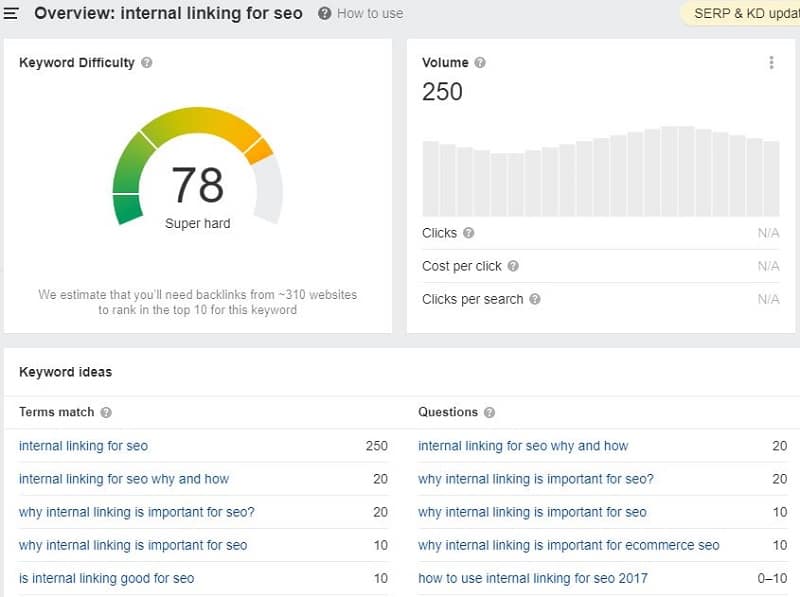The Complete SEO Guide for Businesses: Boost Your Online Visibility and Drive Organic Traffic
In today’s digital world, having a strong online presence is crucial for businesses of all sizes. One of the most effective ways to boost your online visibility and attract organic traffic to your website is through search engine optimization (SEO).
By optimising your website and content for search engines, you can improve your rankings in search results, making it easier for potential customers to find you.
In this complete SEO guide for businesses, we’ll explore various aspects of SEO that are essential for businesses looking to boost their online presence.
We will cover topics such as understanding the basics of SEO and how search engines work, effective keyword research techniques, on-page and off-page SEO best practices, technical SEO, local and mobile SEO, and emerging trends in the world of SEO.
We will also discuss content marketing strategies, monitoring and measuring your SEO performance, and staying ahead of Google algorithm updates.
By implementing the strategies and techniques shared in this guide and its supporting posts, you’ll be well on your way to driving more organic traffic to your website and improving your online visibility. So let’s dive in and start optimising!
In this guide you will learn:
Understanding the Basics of SEO
How Search Engines Work And Why It Matters
Search engines, like Google and Bing, aim to provide users with the most relevant and high-quality information based on their search queries.
They use complex algorithms to crawl, index, and rank web pages based on numerous factors, such as relevance, authority, and user experience.
It is always best to be in front of the algorithm update news and prepare your site for the incoming changes. Below are the links for two major search engines.
| Search Engine | Update Page |
|---|---|
| Google Update Page | |
| Bing | Bing Webmaster Guidelines |
Understanding how search engines work is crucial for businesses, as it helps you create content and optimise your website in a way that appeals to both search engines and users.
Ultimately, this will increase your chances of appearing higher in search results, making it easier for potential customers to find you.
SEO Fundamentals For Business Owners
As a business owner, it’s essential to have a basic understanding of SEO to improve your website’s visibility and drive organic traffic.
Some key SEO basics include:
- Keyword Research: Identifying relevant and high-impact keywords for your niche
- On-Page SEO: Optimising your content, meta tags, and URL structure for search engines
- Technical SEO: Ensuring your website’s performance and accessibility for search engines
- Off-Page SEO: Building authority and trust through link-building and social signals
- Content Marketing: Creating valuable content to attract and engage your target audience
The Importance of Search Engine Optimisation
SEO is important for businesses for several reasons:
Increased Visibility
A higher ranking in search results means more potential customers will see your website and be exposed to your products or services.
Enhanced Credibility
Websites that rank well on search engines are often perceived as more trustworthy and authoritative by users.
Cost-Effective Marketing
Unlike paid advertising, organic traffic from SEO is free and can provide long-lasting benefits for your business.
Targeted Traffic
SEO helps you attract users who are actively searching for the products or services you offer, increasing the likelihood of conversion.
Keyword Research for Your Business
Effective Keyword Research Techniques
Keyword research is an essential aspect of SEO, as it helps you identify the search terms your target audience is using to find products or services like yours.
By targeting these keywords in your content and optimisation efforts, you can improve your search rankings and drive more relevant traffic to your website.
Here are some effective keyword research techniques:
Brainstorming
Start by listing potential keywords related to your business, products, or services. Think about the terms your customers might use to find you.

Use AI tools like chat.gpt to give you good ideas too.
Competitor Analysis
Competitor analysis identifies gaps or opportunities you might have overlooked in your content.
This is one of the most effective SEO strategies to outrank your close competitors. Use tools like ahrefs or SEMrush to see potential keywords that your site is not ranking for. Then create content better than other sites and wait for the result.
Use Keyword Research Tools
Platforms like Google Keyword Planner, Ahrefs, and SEMrush can provide valuable data on keyword search volume, competition, and relevance.

Focus on Long-Tail Keywords
These are longer, more specific phrases that are less competitive and can often lead to higher conversion rates.
Analyse Search Intent
Work out whether users are searching for information, comparing products, or looking to make a purchase, and target keywords that align with your business goals.
Finding High-Impact Keywords For Your Niche
To find high-impact keywords for your niche, focus on the following factors:
Relevance: Choose keywords that are closely related to your products or services, ensuring that the users who find your website are genuinely interested in what you offer.
Search volume: Target keywords with a reasonable search volume (ahrefs, SEMrush) to ensure that there’s enough interest to drive traffic to your site. However, avoid highly competitive keywords, as it may be challenging to rank for them.
Conversion potential: Consider the likelihood of a keyword leading to a conversion. For example, transactional keywords like “buy,” “discount,” or “deal” may have higher conversion potential than informational keywords.
Difficulty: Assess the competition for a keyword by analysing the top-ranking pages for that term. If the top results are dominated by authoritative websites, it may be difficult to rank for that keyword.
On-Page SEO Best Practices
Optimising Content, Meta Tags, And URL Structure
On-page SEO involves optimising various elements of your website to improve its visibility in search results.
Here are some best practices for optimising content, meta tags, and URL structure:
Content: Ensure your content is well-written, informative, and relevant to your target keywords. Use headings (H1, H2, H3) to structure your content and make it easy to read.
Meta title: Create a compelling and keyword-rich meta title for each page, ideally within 60 characters.
Meta description: Write a unique and descriptive meta description for each page, including your target keyword(s), and aim to keep it under 160 characters.
URL structure: Use descriptive and keyword-rich URLs that are easy to understand. Keep them short and use hyphens to separate words.
On-Page SEO Essentials For Higher Rankings
To achieve higher rankings in search results, focus on these on-page SEO essentials:
Keyword usage: Place your target keyword(s) in prominent places, such as the meta title, meta description, and headings, and within the first 100 words of your content.
Internal linking: Link to other relevant pages on your website to help users navigate your content and improve your site’s overall SEO.
Image optimisation: Use descriptive file names and alt tags for your images, and compress them to reduce file size for faster loading.
User experience: Ensure your website is easy to navigate, mobile-friendly, and has a fast loading speed (Google Speed Test).
Content Optimisation Tips For Search Engines
To optimize your content for search engines, consider the following tips:
Write for your audience: Focus on creating valuable and engaging content that addresses your target audience’s needs and questions.
Use LSI keywords: Include semantically related keywords in your content to help search engines understand its context and relevance.
Maintain content freshness: Regularly update your content to keep it current and relevant, which can help improve your search rankings.
Use multimedia: Incorporate images, videos, and other media to make your content more engaging and visually appealing.
Avoid keyword stuffing: Use your target keywords naturally and avoid overusing them, as this can negatively impact your rankings.
Technical SEO for Your Website
Ensuring Performance And Accessibility For Search Engines
Technical SEO focuses on optimising the technical aspects of your website to ensure that search engines can efficiently crawl, index, and rank your content. Improved site performance and accessibility, will enhance your online visibility and attract more organic traffic.
Key areas to focus on include:
Site speed: Optimise your website’s loading time by compressing images, enabling caching, and minimizing HTTP requests.
Mobile-friendliness: Ensure your site is responsive and provides a seamless user experience across different devices.
HTTPS: Secure your website by using an SSL certificate, as HTTPS is a ranking signal for Google.
Sitemap: Create an XML sitemap to help search engines discover and index your content more effectively.
Robots.txt: Use a robots.txt file to instruct search engines which pages to crawl and which to avoid.
Technical SEO Checklist For Businesses
- Check for crawl errors. Use Google Search Console to identify and fix any crawl errors that may be preventing search engines from accessing your content.
- Optimise site architecture. Organise your website’s structure to ensure it’s easy for users and search engines to navigate.
- Remove duplicate content. Identify and resolve any duplicate content issues, as they can negatively impact your rankings.
- Optimise your site’s internal linking. Use descriptive anchor text and links to relevant content to improve your site’s SEO and user experience.
- Ensure proper use of canonical tags. Use canonical tags to inform search engines of the preferred version of a page if you have similar content across multiple URLs.
Check out our comprehensive SEO checklist.
Improving Website Crawlability And Indexability
Use clean and descriptive URLs: Make sure your URLs are easy to understand and include relevant keywords.
Implement structured data: Use schema markup to provide search engines with additional information about your content, which can improve your visibility in search results.
Fix broken links: Regularly check for and fix any broken links to improve user experience and ensure search engines can crawl your site effectively.
Use proper header tags: Organise your content using H1, H2, and H3 header tags to make it easier for search engines to understand your content’s structure.
Monitor your site’s index status: Use Google Search Console to monitor your website’s index status and identify any issues that may be affecting your visibility in search results.
Even though they are different, technical SEO and on-page SEO work together to help your website show up better in search results.
Technical SEO makes your website’s code work well, while on-page SEO organizes how your site looks.
Simply put, technical SEO is about how your site works and on-page SEO is about what’s on your site.
Off-Page SEO Strategies
Building Authority And Trust Through Link-Building And Social Signals
Off-page SEO encompasses activities that take place outside of your website but still impact your search engine rankings. Building authority and trust through link-building and social signals is crucial for improving your online visibility.
These strategies include:
Earning high-quality backlinks: Acquiring links from reputable websites signals to search engines that your content is valuable and trustworthy.
Social media engagement: Active participation on social media platforms can increase your brand’s exposure and drive traffic to your website.
Influencer outreach: Collaborating with industry influencers can help you reach a larger audience and gain credibility in your niche.

Online reputation management: Monitoring and responding to customer reviews and feedback can improve your brand’s reputation and foster trust among your audience.
Off-Page SEO Strategies For Better Visibility
To enhance your website’s off-page SEO, consider implementing these strategies:
- Guest blogging. Contribute content to reputable websites in your niche to earn backlinks and increase your brand exposure.
- Content promotion. Share your content across social media channels, email newsletters, and online communities to drive traffic and attract backlinks.
- Local SEO. Optimise your Google My Business listing and build local citations to improve your local search visibility.
- Building relationships. Network with industry professionals, attend conferences and join online forums to foster connections and build your brand’s authority.
Effective Link-Building Techniques For 2023
To stay ahead of the curve in 2023, adopt these effective link-building techniques:
Skyscraper technique: Identify popular content in your niche, create an even better version, and reach out to websites that have linked to the original piece, encouraging them to link to your improved content.
Broken link building: Find broken links on relevant websites, create content that matches the original, and suggest the webmaster replace the broken link with your new resource.
Resource link building: Create valuable resources, such as guides or infographics, and pitch them to websites that share similar content, encouraging them to link to your resource.
Unlinked brand mentions: Search for instances where your brand has been mentioned but not linked to, and request the website owner to add a link to your site.
Local SEO for Small Businesses
Attracting Local Customers And Improving Local Search Presence
Local SEO focuses on optimising your online presence to attract more customers from relevant local searches.

It’s crucial for small businesses to invest in local SEO to increase their visibility in local search results and attract nearby customers.
Key strategies include:
- Create and optimise your Google My Business listing to improve your local search rankings and online visibility.
- Ensure your business’s name, address, and phone number (NAP) are consistent across online directories and listings.
- Create locally relevant content that appeals to your target audiences, such as blog posts, videos, or social media updates related to your community or industry.
- Encourage customers to leave reviews on Google My Business and other review platforms, as they can influence your local search rankings.
Local SEO Tips For Small Businesses
To succeed in local SEO, small businesses should consider these tips:
Use location-specific keywords: For example incorporate local keywords in your website’s content, meta tags, and URLs to help search engines understand your geographical focus.
Optimise for “near me” searches: This includes phrases like “near me” or “in [your city]” in your content and meta tags to capture local search traffic.
Build local backlinks: Seek out opportunities to earn backlinks from local websites, such as partnering with other businesses or participating in community events.
Leverage local schema markup: Use structured data to provide search engines with additional information about your local business, such as your address, operating hours, and services offered.
Optimising Your Website For Local Search Results
To optimise your website for local search results, implement the following strategies:
- Optimize title tags and meta descriptions. Include your target location and local keywords in your title tags and meta descriptions.
- Create location-specific landing pages. If you have multiple locations, create unique landing pages for each one, including location-specific content and contact information.
- Embed Google Maps on your website. Display your business’s location on a Google Map embedded on your website, making it easier for customers to find you.
- Optimise for mobile. Ensure your website is mobile-friendly, as many local searches are conducted on mobile devices.
Mobile SEO Best Practices
Ensuring Website Performance And User Experience On Mobile Devices
Mobile SEO involves optimising your website for optimal performance and user experience on mobile devices. As mobile searches continue to grow, it’s essential for businesses to prioritise mobile SEO to maintain a competitive edge.

We suggest focusing on:
Responsive design: Ensure your website automatically adjusts to fit different screen sizes and devices.
Mobile-friendly navigation: Implement user-friendly navigation to make it easy for mobile users to browse your website.
Fast-loading pages: Optimise your site’s loading speed on mobile devices by compressing images, minimizing HTTP requests, and enabling browser caching.
Touch-friendly buttons and links: Design buttons and links that are large enough to be easily tapped on a touch screen.
Mobile SEO Best Practices For Businesses
To optimise your website for mobile SEO, follow these best practices:
- Use Google’s Mobile-Friendly Test. Check your website’s mobile-friendliness using Google’s Mobile-Friendly Test tool and implement any suggested improvements.
- Optimise content for mobile devices. Use shorter paragraphs, bullet points, and subheadings to make your content more easily digestible on smaller screens.
- Avoid intrusive pop-ups. Minimise the use of pop-ups on mobile devices, as they can negatively impact user experience and your search rankings.
- Implement Accelerated Mobile Pages (AMP): Utilise AMP to create lightweight versions of your web pages, which can improve your site’s loading speed on mobile devices.
Improving Mobile Search Rankings And Visibility
To enhance your mobile search rankings and visibility, consider these strategies:
Prioritise mobile-first indexing: Google now uses mobile-first indexing, meaning it primarily crawls and indexes the mobile version of a website. Ensure your mobile site is fully optimised and contains the same valuable content as your desktop version.
Use mobile-specific keywords: Conduct keyword research for mobile users and incorporate relevant mobile-specific keywords into your content and meta tags.
Optimise for voice search: As voice search becomes more prevalent on mobile devices, optimise your content for conversational queries and long-tail keywords.
Track mobile performance: Use analytics tools, such as Google Analytics, to monitor your website’s mobile performance and make data-driven improvements.
Voice Search Optimization
Preparing Your Website For The Future Of Search
Voice search is becoming increasingly popular, with more people using voice assistants like Google Assistant, Siri, and Alexa to perform online searches.
To stay ahead of the curve, it’s essential to prepare your website for the future of search by optimizing for voice queries.
This involves understanding the characteristics of voice searches and adapting your content and SEO strategies accordingly.
Voice Search SEO Techniques
To optimise your website for voice search, consider implementing these techniques:
- Focus on long-tail keywords: Voice searches tend to be more conversational and longer than text-based searches. Target long-tail keywords that mimic natural speech patterns.
- Optimise for question-based queries: Voice searches often involve questions. Use question-based keywords and incorporate them into your content, headings, and meta tags.
- Structure your content for quick answers: Voice assistants typically provide a single answer to a query. Format your content to answer questions concisely and clearly.
- Use schema markup: Implement structured data to help search engines better understand your content and improve the chances of being featured in voice search results.
Optimising Content For Voice Search Queries
To optimise your content for voice search queries, follow these tips:
- Write in a conversational tone that matches the way people speak when using voice search.
- Provide clear and concise answers to common questions related to your target keywords.
- Create FAQ pages that address common questions in your niche, using conversational language and long-tail, question-based keywords.
- Voice searches often have local intent. Optimise your content and website for local searches to improve your chances of being found through voice search.
Content Marketing and SEO
Creating Valuable Content To Drive Organic Traffic
Content marketing plays a vital role in SEO by providing valuable, relevant, and engaging content that attracts organic traffic and generates high-quality backlinks.
By consistently creating high-quality content, you can establish your brand as an industry authority, foster trust with your target audience, and improve your search engine rankings.
Content Marketing Strategies For SEO Success
To achieve SEO success with content marketing, consider implementing these strategies:
Develop a content plan: Outline your content goals, target audience, and key topics to cover. This will help you create content that addresses your audience’s needs and interests.
Conduct keyword research: Identify the most relevant and high-impact keywords in your niche, and incorporate them strategically in your content.
Create shareable content: Produce content that is engaging, informative, and share-worthy to increase your chances of earning backlinks and social signals.
Utilise different content formats: Experiment with various content formats, such as blog posts, videos, infographics, and podcasts, to cater to diverse audience preferences and improve user engagement.
How To Create SEO-Friendly Content
Include your target keywords in title tags and meta descriptions to signal the topic of your content to search engines and users.
Organise your content with H1, H2, and H3 tags to create a clear hierarchy and make it easier for search engines and users to navigate.
Link to relevant internal and external resources to provide additional value to your audience and improve your content’s credibility.
Write in clear, concise, and easy-to-understand language, and use short paragraphs, bullet points, and subheadings to improve readability.
Monitoring and Measuring SEO Performance
Essential Metrics And Tools
To effectively manage and improve your SEO efforts, it’s crucial to monitor and measure your performance using essential metrics and tools.
By tracking these metrics, you can identify areas for improvement, make data-driven decisions, and help achieve success.
Key SEO Metrics To Track For Success
- Organic traffic: The number of visitors who find your website through search engines.
- Keyword rankings: The position of your website in search engine results pages (SERPs) for specific keywords.
- Bounce rate: The percentage of visitors who leave your website after viewing only one page.
- Conversion rate: The percentage of visitors who complete a desired action, such as making a purchase or signing up for a newsletter.
- Backlinks: The number of links from other websites pointing to your content.
- Domain Authority (DA) and Page Authority (PA): Metrics developed by Moz to estimate the likelihood of a website ranking well in search engine results.
- Time on page: The amount of time visitors spend on a specific page of your website.
- Click-through rate (CTR). The percentage of users who click on your website from the search engine results page.
Top SEO Tools And Platforms For Businesses
There are numerous SEO tools and platforms available to help businesses monitor and measure their SEO performance.
Some of the most popular and effective tools include:
Google Analytics: A comprehensive web analytics tool that tracks website traffic, user behaviour, and conversions.
Google Search Console: A free service that helps you monitor, maintain, and troubleshoot your website’s presence in Google Search results.
SEMrush: An all-in-one digital marketing platform offering SEO, PPC, and content marketing tools.
Ahrefs: A powerful SEO toolset that provides data on backlinks, keywords, and competitor analysis.
Moz Pro: An SEO software suite that offers tools for keyword research, site audits, rank tracking, and more.
Screaming Frog SEO Spider: A website crawling tool that helps you identify technical SEO issues and optimise your website’s on-page elements.
Google Algorithm Updates
Staying Ahead Of Changes And Maintaining Your Rankings
Google continually updates its search algorithm to improve the quality and relevance of search results.
To stay ahead of these changes and maintain your rankings, it’s crucial to keep up-to-date with the latest updates, understand their impact on your website, and make necessary adjustments to your SEO strategy.
Understanding Google Algorithm Updates
Google algorithm updates can range from minor tweaks to major overhauls that significantly affect search rankings. Some well-known updates from the past:
Panda. Launched in 2011, this update targeted low-quality content, such as duplicate or thin content, and prioritised high-quality, informative, and unique content.
Penguin. Introduced in 2012, Penguin aimed to penalise websites engaging in manipulative link-building practices and reward sites with natural, high-quality backlinks.
Hummingbird. Released in 2013, Hummingbird focused on improving the search engine’s understanding of user intent and semantic search to provide more relevant results.
Mobilegeddon. In 2015, Google rolled out this update to prioritise mobile-friendly websites in mobile search results.
RankBrain. Launched in 2015, RankBrain is an AI-powered component of Google’s search algorithm that helps interpret complex, ambiguous, or previously unseen queries.
How To Adapt Your SEO Strategy To Algorithm Changes
To adapt your SEO strategy to Google algorithm updates, follow these best practices:
Create unique, informative, and engaging content that provides value to your audience and aligns with Google’s focus on quality.
Earn high-quality backlinks through content marketing, outreach, and relationship-building, avoiding manipulative or spammy link-building tactics.
Ensure your website is mobile-friendly and responsive to provide a positive user experience for mobile visitors.
Understand your audience’s needs and create content that addresses their questions and concerns.
Follow SEO blogs, forums, and publications to stay informed about the latest algorithm updates and best practices.
SEO Trends for 2023
Emerging Techniques And Technologies To Watch
As search engines continue to evolve, new techniques and technologies emerge that can impact SEO. Some key developments to watch in 2023 include:
- Artificial Intelligence (AI) and machine learning: As search engines increasingly rely on AI to interpret user intent and deliver relevant results, optimising your content for semantic search and natural language processing will become even more critical.
- Core Web Vitals and user experience (UX): Google’s focus on Core Web Vitals and overall user experience addresses the importance of site speed, responsiveness, and visual stability for higher search rankings.
- Video and visual content: As video consumption continues to rise, optimising your video content for search engines and incorporating it into your content marketing strategy will be essential.
Upcoming SEO Trends And Innovations
Some upcoming SEO trends and innovations to watch for in 2023:
Google’s passage ranking feature aims to better understand and rank individual passages within a web page, making long-form content more accessible and valuable for users.
With the increasing popularity of voice assistants and smart speakers, optimising your content for voice search queries will become even more crucial.
As users interact with businesses across multiple digital touchpoints, optimising your online presence for different platforms and devices will be vital for maintaining visibility and engagement.
Preparing Your Website For Future SEO Changes
What strategies you can take to future-proof your website?
- Stay informed: Keep up-to-date with the latest SEO news, updates, and best practices by following industry blogs, forums, and publications.
- Embrace new technologies: Be open to experimenting with emerging technologies and incorporating them into your SEO strategy.
- Prioritize user experience: Continuously improve your website’s user experience by focusing on site speed, mobile-friendliness, and overall usability.
- Diversify your content formats: Experiment with different content formats, such as video, infographics, and podcasts, to cater to diverse audience preferences and improve engagement.
- Monitor and measure your performance: Regularly track your SEO metrics and make data-driven decisions to adapt and improve your strategy.
The Complete SEO Guide for Businesses – Final Word
In this comprehensive SEO guide for businesses, we’ve covered a wide range of topics to help you boost your online visibility and drive organic traffic.
We’ve discussed the basics of SEO, effective keyword research techniques, on-page and technical SEO best practices, off-page SEO strategies, local and mobile SEO, voice search optimization, content marketing, performance monitoring, Google algorithm updates, and emerging SEO trends for 2023.
Now that you have a better understanding of the various aspects of SEO, we encourage you to implement the strategies and techniques shared in this guide.
By doing so, you’ll be well on your way to improving your website’s search engine rankings, increasing your online visibility, and attracting more organic traffic to your business.
SEO is an ever-evolving field, and staying up-to-date with the latest trends and best practices is crucial for continued success.
When starting a new website and doing SEO is like climbing a big mountain, but when you reach there you will be successful!

We invite you to explore the supporting posts linked throughout this guide for more in-depth information on each topic, as well as other valuable resources available online.
Don’t hesitate to share your thoughts, questions, or experiences in the comments section below.
If you need help with your business website please don’t hesitate to discuss it with be scheduling a free SEO strategy call.



